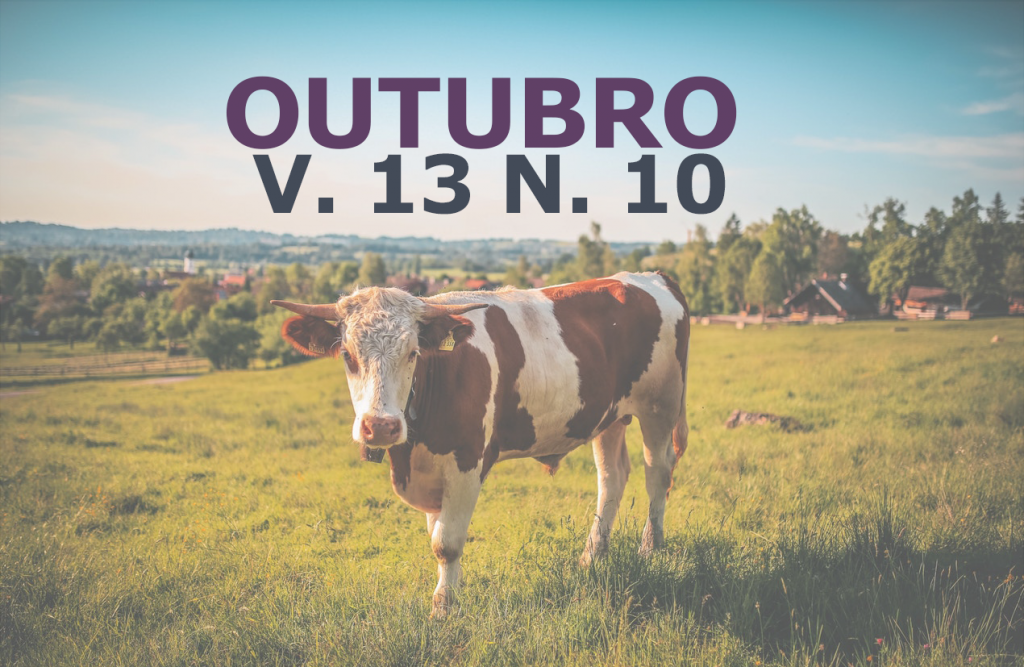Metal complexes in the gastrointestinal tract as a relevant topic for understanding mineral nutrition: Review
DOI:
https://doi.org/10.31533/pubvet.v13n10a432.1-6Keywords:
metallic complexes; gastrinstestinal tract (GIT); mineral nutritionAbstract
The formation of the called coordination compounds, which are usually known as metallic complexes (in spite of some coordination centers are not metallic species) constitutes one important factor to determine the mineral salts quantity excreted in the faeces of different animal species. This chemical process occurs in the gastrintestinal tract (GIT) of distinct animal species, including ruminants and non-ruminant species. This formation occurs through proteins, polypeptides, oligopeptides, polysaccharides, oligosaccharides, together with various other biomolecules that present several oxygen and/or nitrogen sites and/or some other atom that present non-ligand pairs, which can, acting as Lewis bases, attack metallic cations, which act, in this way, as Lewis acids, forming coordinated covalent bounds, and can, therefore, generate tipical metallic complexes. Considering that in GIT of several species the number of small biomolecules, macromolecules, ions and molecules from the diet, with great presence of cellulose and proteins, these macromolecules present a decisive role in the retention of a great number of cations originated of the dissociation of mineral salts ingested by the animal. The anions, originated by the saline dissociation, by the eletrostatic atraction tends to follow the cations, which would affect the salt absorption in GIT. Strategies have been proposed aiming to optimize the mineral salts absorption, such as the use of chelated salts and some adjustments in the management, mainly with respect to the saline, fiber, protein feeding for some species. The present review article didactically shows and discuss the basic mechanisms of the metallic complexes formation in GIT and its inherent implications, since this topic is fundamental to the understanding the mineral nutrition and the mechanisms that can accentuate the saline absorption, which constitutes important component of the feeding cost associated to various relevant species in animal science. Considering the relevance of this subject to the understanding of the mineral nutrition of several animals, with interest in animal production or not, as well as the few articles of publication of this area, we believe that it is necessary a higher emphasis in research upon this subject, which could to furnish important contribution to the studies regarding animal nutrition and correlated areas.
Downloads
Published
Issue
Section
License
Copyright (c) 2019 Leonardo Marmo Moreira, Alexandre de Oliveira Teixeira, Henrique Valentim Nunes Machado, Raphael Pavesi Araújo, Juliana Pereira Lyon

This work is licensed under a Creative Commons Attribution 4.0 International License.
Você tem o direito de:
Compartilhar — copiar e redistribuir o material em qualquer suporte ou formato
Adaptar — remixar, transformar, e criar a partir do material para qualquer fim, mesmo que comercial.
O licenciante não pode revogar estes direitos desde que você respeite os termos da licença. De acordo com os termos seguintes:
Atribuição
— Você deve dar o crédito apropriado, prover um link para a licença e indicar se mudanças foram feitas. Você deve fazê-lo em qualquer circunstância razoável, mas de nenhuma maneira que sugira que o licenciante apoia você ou o seu uso. Sem restrições adicionais
— Você não pode aplicar termos jurídicos ou medidas de caráter tecnológico que restrinjam legalmente outros de fazerem algo que a licença permita.





